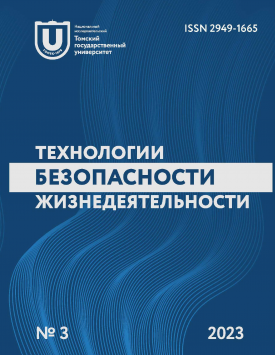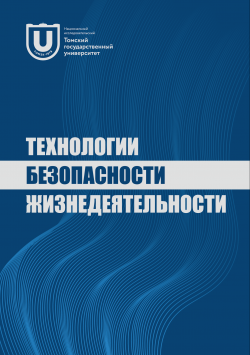Development of a draft standard for the permissible residual content of petroleum hydrocarbons in bottom sediments after restoration work on water bodies of Krasnoyarsk Krai
Analytical and experimental studies were carried out to collect information on the state of water bodies of Krasnoyarsk Krai, on the background content of petroleum hydrocarbons, and on the toxicity of crude oil for aquatic organisms. Analysis of stock materials for monitoring licensed areas (245 sites), the mineral nature of the vast majority of bottom sediments was revealed, the scatter values of the total hydrocarbon content ranged from <5 to 712 mg/kg, of which almost half were <50 mg/kg. Quantitative chemical analysis of 306 sediment samples collected in Krasnoyarsk Krai as a part of the current work also showed the predominance of mineral sediments (> 75%). The largest proportion of samples (67.7%) was represented by bottom sediments containing from 50 to 250 mg/kg of petroleum hydrocarbons. The Spearman correlation between the total hydrocarbon concentration in bottom sediments and the content of organic matter was strong and significant (rs = 0.75, /><0.01). Experiments to determine the sorption characteristics of different types of bottom sediments to crude oil of Krasnoyarsk Krai (Kuyumbinskoe and Yurubcheno-Tokhomskoe fields) showed that mineral sediments had the minimum sorption capacity, in which the residual hydrocarbon content was 14.4 g/kg oil. In mixed and organic sediments this was 73.1 and 91.2 g/kg, respectively. There is a significant strong correlation between the content of organic matter and residual hydrocarbons in bottom sediments (rs = 0.84, p < 0.01). It was discovered that in the surveyed areas the concentration of hydrocarbons does not affect the benthic communities, and the variation in bioindicators is due to natural causes. The statistical calculations showed that there is no reliable correlation between the total content of hydrocarbons in bottom sediments and bioindication indices (Shannon and oligochaete indices). Biotests to determine the range of organism tolerance to crude oil showed that in mineral sediments it does not have acute toxicity to the Scendesmus quardricauda (Turp.) Breb. Algae in concentrations up to 1000 mg/kg, and on the crustacean Daphnia magna Straus - up to 500 mg/kg; no chronic toxicity was noted for Limnodrillus worms up to 2000 mg/kg. Crude oil contained in organic sediments did not have a toxic effect on all test objects at concentrations up to 20,000 mg/kg. The average hydrocarbon content in organic sediments, safe for macrozoobenthos, calculated based on our results and published data was 5013 mg/kg. A draft standard “Permissible residual content of crude oil and petroleum hydrocarbons in bottom sediments after restoration work on water bodies of Krasnoyarsk Krai” was proposed based on the current work results. It is proposed to introduce a diversified standard for different types of bottom sediments: 5000 mg/kg for organic sediments, 200 mg/kg for mineral sediments; for mixed bottom sediments, set the standard using a calculation method based on the content of organic matter. The authors thank JSC TomskNIPIneft for their assistance in collecting archival materials. Contribution of the authors: Conceptualization and methodology of the study - Vorobiev D.S., Frank Y.A.; Supervision - Vorobiev D.S.; Field studies and sampling - Blokhin A.N., Suslyaev V. V.; Laboratory investigations and model experiments - Vorobiev D.S., Frank Y.A., Rodikov F.N., Denisenko M.S.; Data analysis and statistics - Vorobiev D.S., Frank Y.A.; Writing and visualization - Vorobiev D.S., Frank Y.A., Blokhin A.N. The authors declare no conflicts of interests.
Keywords
water bodies, bottom sediments, crude oil, petroleum hydrocarbons, Krasnoyarsk KraiAuthors
| Name | Organization | |
| Vorobiev Danil S. | Tomsk State University | danilvorobiev@yandex.ru |
| Frank Yulia A. | Tomsk State University | yulia.a.frank@gmail.com |
| Blokhin Alexander N. | Tomsk State University | bansoil@mail.ru |
| Suslyaev Valeriy V. | Tomsk State University | sturwal@mail.ru |
| Rodikov Fedor N. | Tomsk State University | teodoro2014@mail.ru |
| Denisenko Maksim S. | Tomsk State University | maxden1198@ya.ru |
References

Development of a draft standard for the permissible residual content of petroleum hydrocarbons in bottom sediments after restoration work on water bodies of Krasnoyarsk Krai | Tekhnologii bezopasnosti zhiznedeyatelnosti – Life Safety/Security Technologies. 2023. № 3. DOI: 10.17223/7783494/3/7
